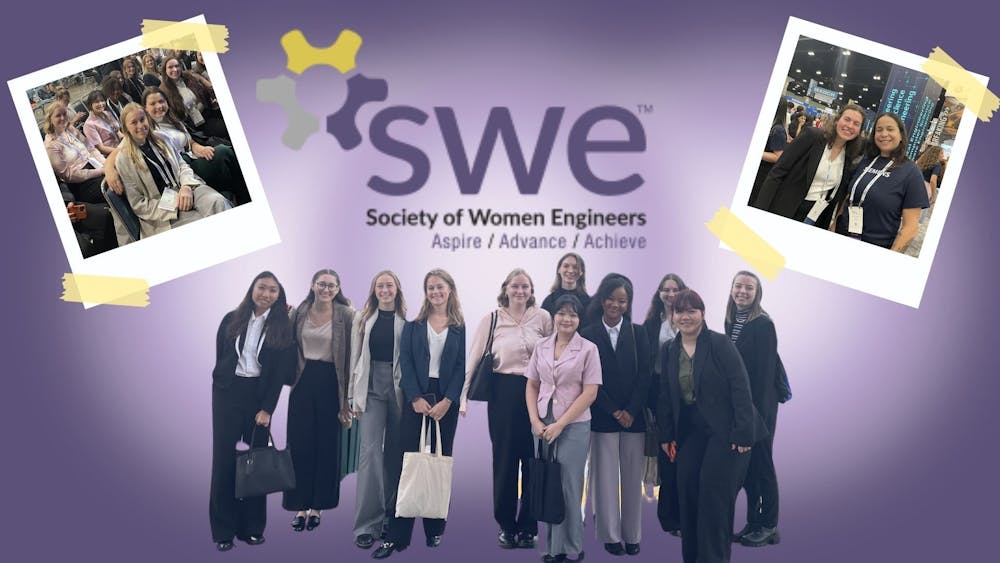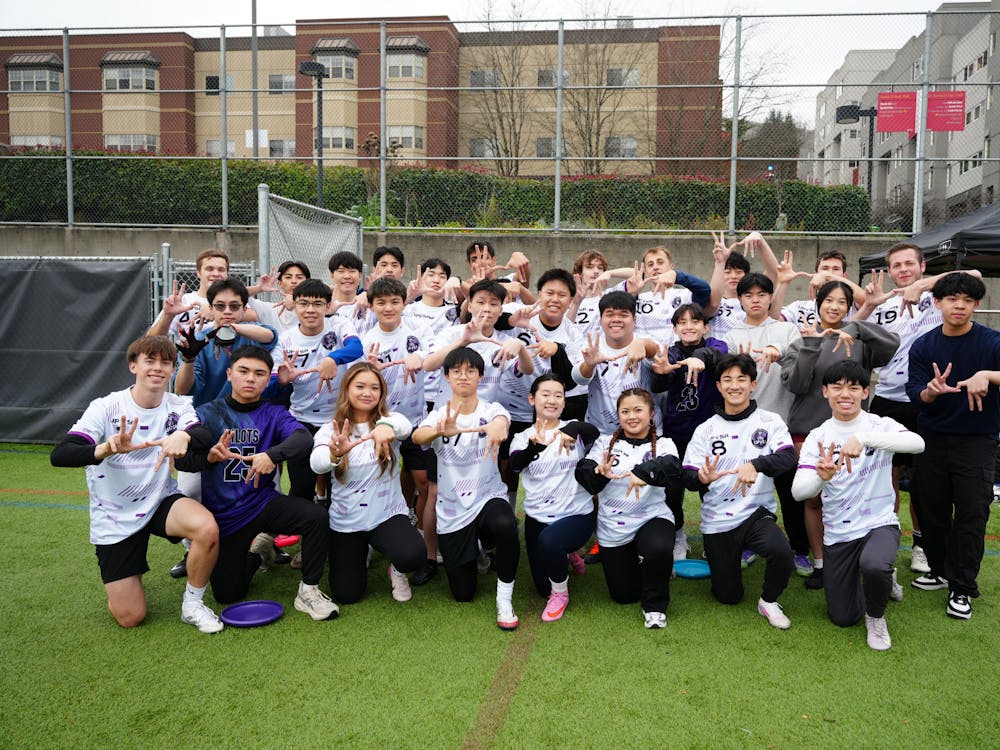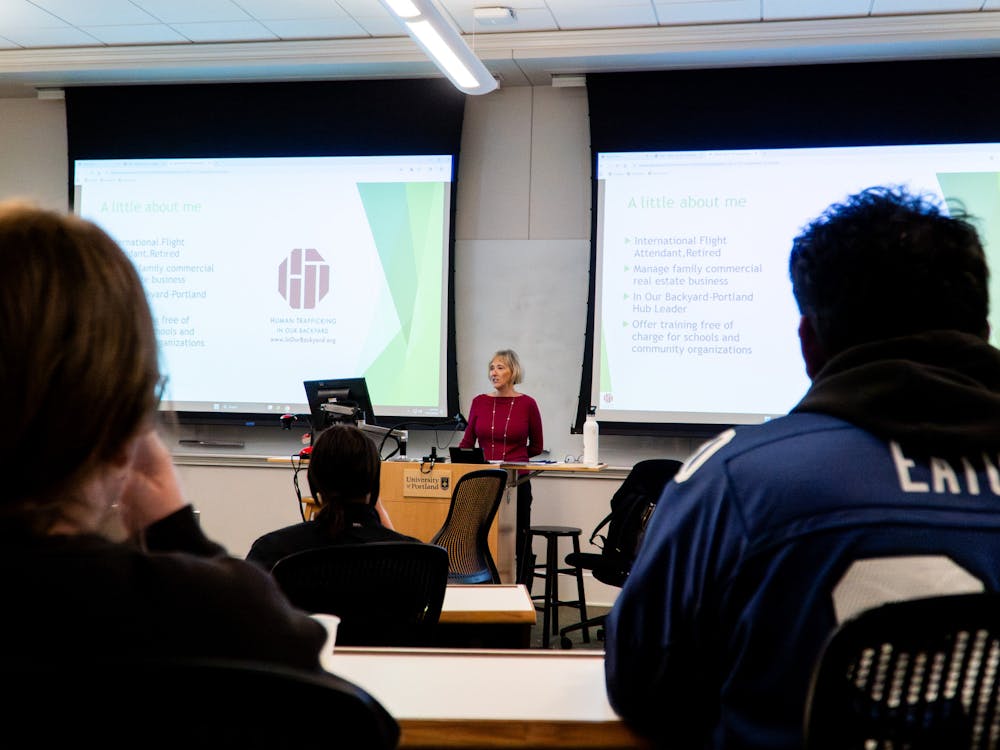Imagine a room of 100 people. Now select 15 of those individuals. While you may be thinking that this visualization is a fancy way of expressing a percentage, the image paints a stark picture: That subset is representative of how many women you might expect to find in a similarly sized group of engineers, according to a 2020 global statistic by the Society of Women Engineers (SWE).
While there have been an increasing number of women involved in engineering and STEM over the years, the discrepancy between the number of men and women in the engineering workforce and in the classroom is still apparent.
UP’s SWE chapter and the organization at large aims to bridge that gap by fostering an environment where everyone, regardless of gender, can work together to expand the image of the profession in a diverse way. The goal is to ultimately break down the stereotypes of engineering as an exclusively male-dominated field and promote the empowerment of women in engineering by providing a unique space for voices to be amplified in the industry.
In addition to SWE’s guiding principles, the group here at UP has and continues to involve engineers with key events to assist them in their career paths. From career fairs to resume review sessions, the group works with outside partners and facilities here at UP, such as the Career Center, to help coordinate opportunities for students.
With the support of the Shiley School of Engineering, many members of SWE attended the national SWE conference in Los Angeles, which took place this fall. The event featured panels, keynote sessions, and a large career fair where networking and interviews took place for students interested in internship and full-time positions beginning this summer.
Katt Gamblin, a senior mechanical engineer and the president of the UP SWE chapter, joined SWE during her first year at UP when classes and events were online, meeting some of her closest friends through the group who helped develop her early career path. She credits this as one of the primary reasons she decided to get more involved.
“That’s how I really got involved with the program,” Gamblin said. “That’s where I started and I am still friends with my mentor today. That’s something that we continue doing and I think helps quite a bit at least spread the word about what we’re trying to do.”
The mentorship program in place works to replicate the same feeling of inclusivity and early career preparation that Gamblin similarly experienced. The goal is to connect incoming students with the upperclassmen.
Trainings have also helped the group emphasize the necessary leadership that originally attracted members like Gamblin to SWE. In fact, members across other SWE chapters from the University of Oregon or Portland State University, for instance, get involved with events to share their thoughts.
“This past fall, we had a half-day long leadership training,” senior mechanical engineer and treasurer Amanda Schiff said. “Someone from a local SWE chapter came and talked to all the officers about ways to improve the chapter and how to improve our leadership skills.”
The leadership and many of the panels organized by SWE are led by women, but Gamblin emphasizes that men should not be discouraged from joining the chapter as one of their primary goals is to provide opportunities for all engineers.
“We’re not here just for women,” Gamblin said. “Our opportunities are never specifically about women. We bring in women in for leadership as well as all of our panels are mostly women. But that’s just because we want our members to see that there are people in the field that know what’s going on and can continue to support you.”
For computer science professor Tammy VanDeGrift, who is also the advisor to UP’s SWE chapter, the experience of being the minority as an engineer in academia was a personal experience.
“I was the only computer science major at my undergraduate who was female, plus or minus three years,” VanDeGrift said. “. So I never worked with a woman on a computer science project until I got into graduate school.”
The field of engineering can also be biased because of these gaps in representation. For instance, VanDeGrift noted past issues in the tech industry where early voice recognition systems struggled to recognize female voices given the predominance of all-male development teams. Similar issues continue to exist today.
“I think for a society, we need a diverse group of people making things for a diverse group of people,” VanDeGrift said. “I think SWE is one mechanism to keep women and people who support women engaged in the whole pipeline.”
Gamblin similarly stresses the need to account for all voices, specifically in the field of engineering where problem solving is critical and there are often multiple ways to solve those problems.
“When our opinions are spoken, they are pushed aside sometimes,” Gamblin said. “That’s happened to me and that’s happened to quite a few other people. The biggest thing is it doesn’t matter whether we’re right or not. It’s really just bringing us more into the conversation.”
Michael Lang is a member of the Editorial Board. He can be reached at langm24@up.edu.








